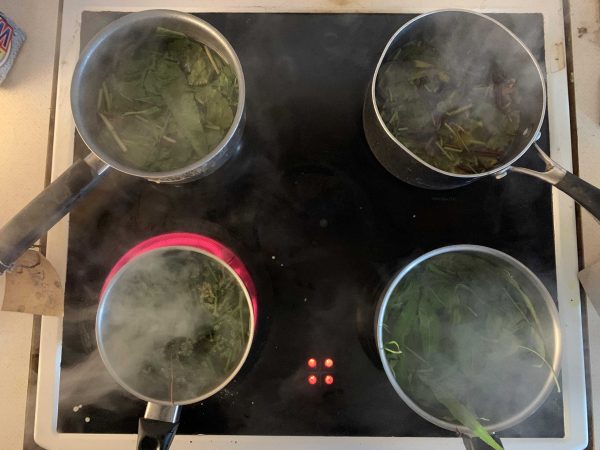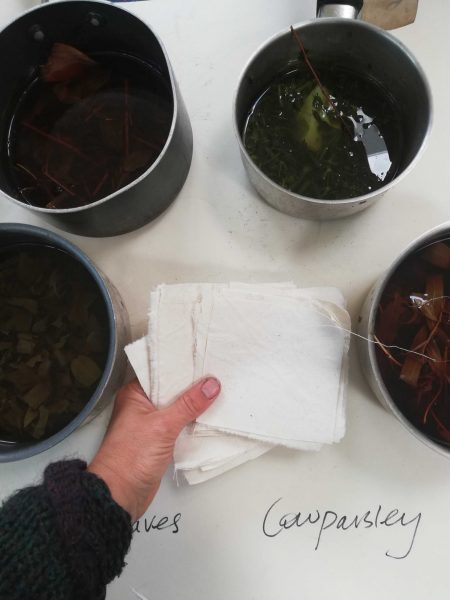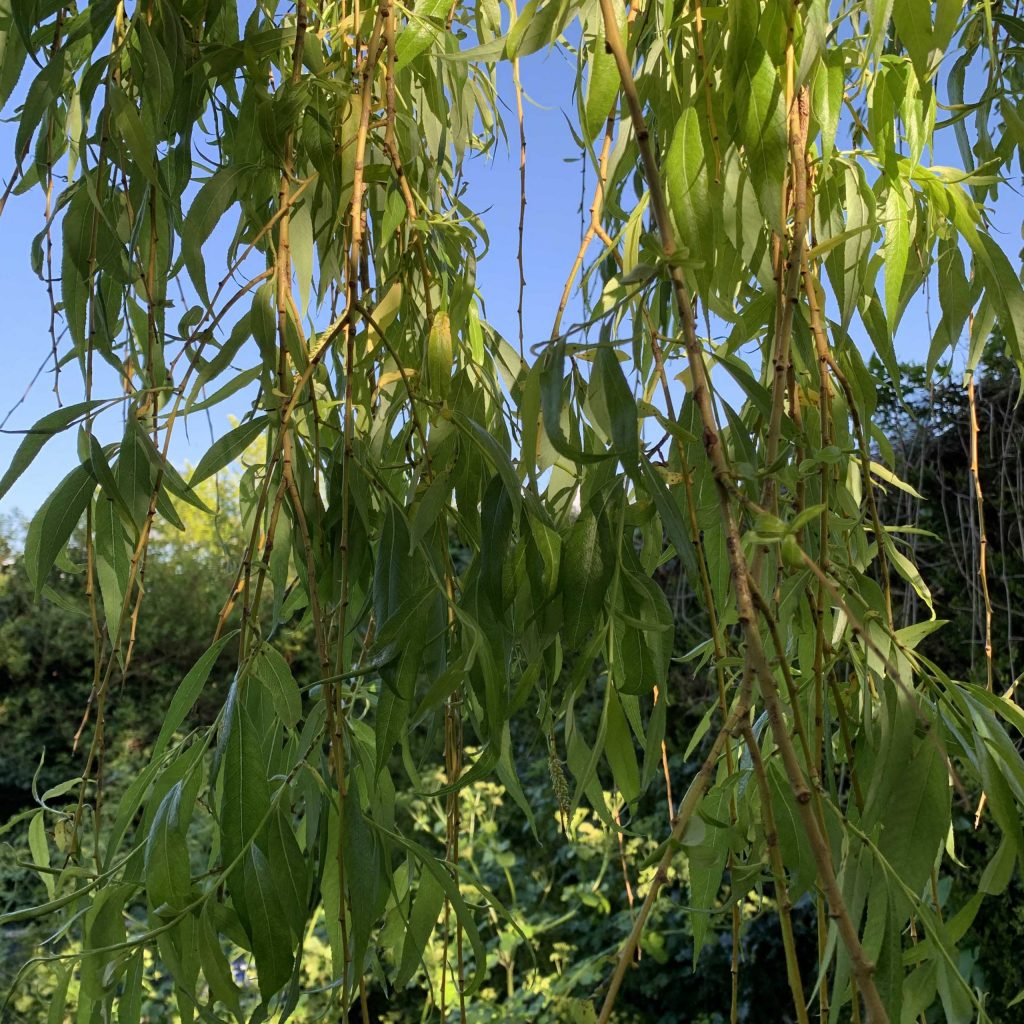Have a go at Natural Dyeing using common garden plants
I’ve been really missing my Wild Textiles workshops when I take groups of students foraging on the Downs for plants which make natural dyes – nearly all plants make some kind of colour and once we get back to the workshop we get to experiment with lots of wonderful leaves, roots and flowers – we often have 40 or more dye pots simmering away and make up the most incredible dye books. I really hope we can get these workshops up and running maybe on a one to one basis sometime soon.
In the meantime I was thinking about all the really great plants much closer to home which can also make gorgeous colours. I thought I would share some of these ordinary wonderful things with you and show you how you could – very simply make lovely colours from these very common plants.
Here are a few plants which I hope you can get hold of really easily –
From left to right: Dock Leaves, Cow Parsley, Willow leaves and St Johns Wort stalks (that’s the plant with the pretty yellow flowers, also known as Hypericum. It’s leaves have got a very distinctive spicy sweet smell)
If you don’t have a garden I hope you can ask a friend or neighbour if they maybe have some or take a sneaky handful from the park.

All you need to make your natural dyes apart from the plant matter is some fabric and a pot to cook them up in.
First roughly chop up your leaves and stalks with a pair of scissors

Next – grab a pot. You can use one from the kitchen because non of these leaves are harmful and you can give the pot a good scrub out afterwards.

Next – Fill the pot with hot water and bring to the boil. Then reduce the heat and keep on a low simmer.

Now we can prepare your fabric. I’ve used little squares of calico – it’s just been washed. I haven’t used any mordants or anything special beforehand. You can use any spare cotton, linen or silk that you have to hand – just make sure it’s washed and clean.

Wet your fabric first before adding it to the dye bath.

Keep your dye bath hot and keep adding water so that it doesn’t boil dry. Do take the pot off the heat, for example overnight and just let the fabric steep in the dye – this is a great way to extract the colour.

After 24 hours your fabric should look something like this – the Dock leaves have turned the square of calico brown, the Cowparsley has dyed the fabric an almost illuminous yellow, the Willow leaves have given pink and the St John’s Wort stems a lovely browny red.
To finish off – run your fabric under the tap until the water runs clear. This way you know that any excess dye has been removed.
The process is slow but super simple. Once you’ve had a play with little scraps of fabric you could try larger pieces to make handkerchiefs, scarves, napkins, pillowcases….
And you could try leaving the fabric in for even longer – this is really SLOW textiles and the slower you go the better the result.
I do hope this blog makes sense and gives you clear step by step instructions for dyeing your own fabric with common garden plants – please get in touch if you have any questions.
I really hope you have a go and please let me know how you get on – your results may not be the same as mine as different soils and weathers have an effect on the plant material but I hope you get something that you like X
Have fun X





